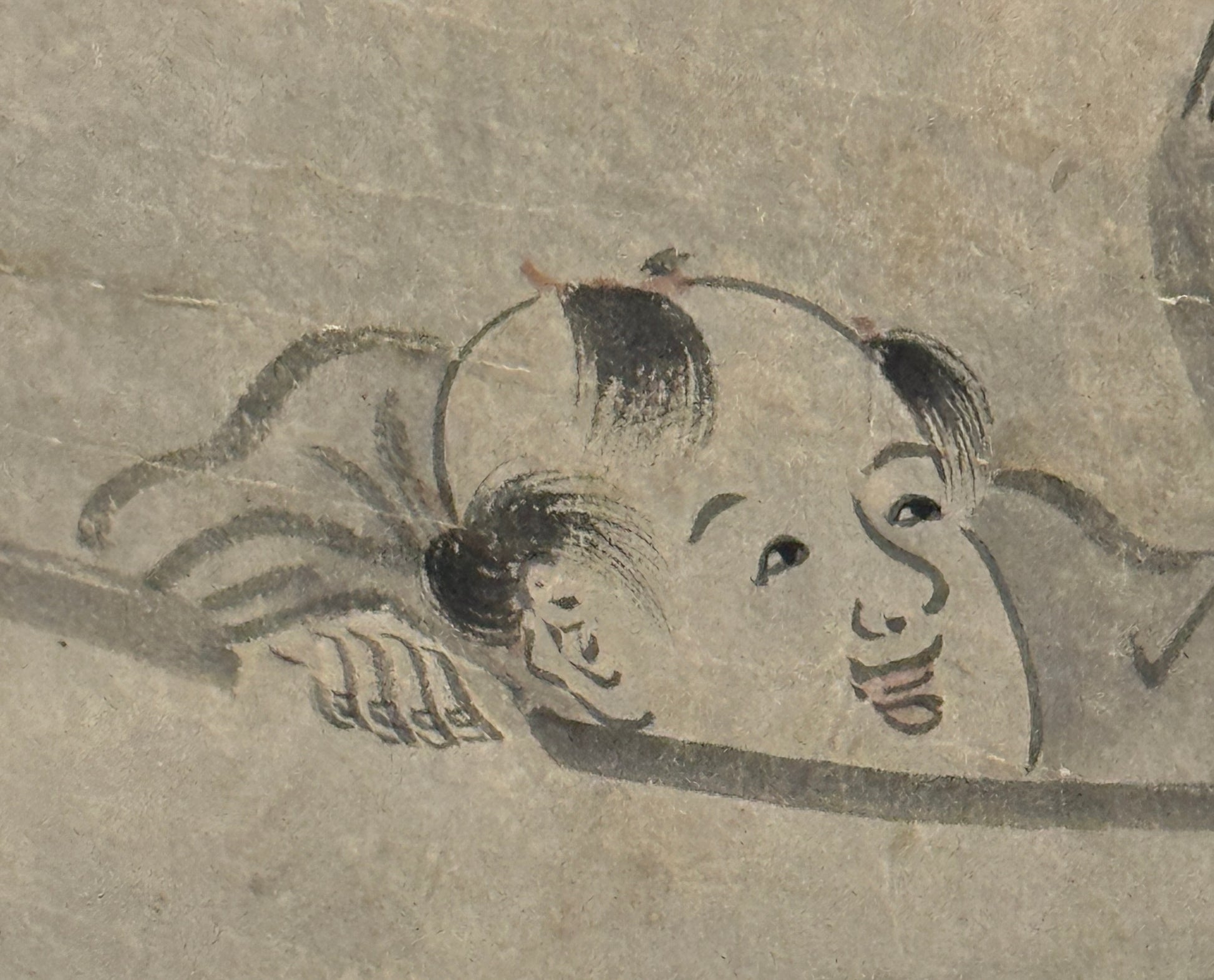Guignard Kyoto Collection
Hotei (God of Luck) | Kanō Naonobu attr. 狩野尚信(伝)| 1607-1650
Hotei (God of Luck) | Kanō Naonobu attr. 狩野尚信(伝)| 1607-1650
Couldn't load pickup availability
The authorship of this impressive scroll painting is difficult to ascertain due to a missing signature and two seals that cannot be identified. Researchers are constantly discovering new seals, so this assessment of the authenticity situation is not too problematic. A missing signature is also quite common at this time. What is important is that the painting is of convincing quality; it is art of the best Kanō tradition of the 17th century.
Naonobu is the "blue blood" of this Kanō family, which as an institution shaped the artistic developments in Japan for over 400 years. He was the younger brother of the great Tanyū. At just sixteen years of age he was promoted to the rank of painter for the Shogun (goyō eshi). At the age of twenty he was commissioned to create paintings for the representative Nijō Castle in Kyoto, and in 1630 he was commissioned to found the Kobikichō studio in Edo (Tokyo), which subsequently produced several of the greatest Kanō masters.
Hotei is one of the Seven Gods of Fortune, who are nowadays present in Japan, especially on New Year's Day. Hotei can be recognized by the large sack (full of wealth and luck) that he carries with him; his belly rivals this. His smile is charming and loving - it is usually directed at one or more children. Even in old age, Hotei can play jokes that children like, and he is perfectly happy in their company. Hotei is probably the most frequently painted god of fortune.










